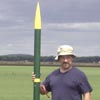#186438 - 2008-03-22 06:51 PM

 Re: DateDiff, DateAdd
[Re: Skatterbrainz]
Re: DateDiff, DateAdd
[Re: Skatterbrainz]
|
Glenn Barnas

KiX Supporter
    

Registered: 2003-01-28
Posts: 4401
Loc: New Jersey
|
The TimeDiff and TimeConvert (which use similar logic) provide a high degree of accuracy. From the header:
"Validated by generating sequential date values from 1/1/1883 to 12/31/2105, a range of just over 8.5 Billion seconds."
The 1883 date was chosed pretty much at random for the sequential testing. Random testing for dates between 1 and the year 3000 was also done.
The logic used by these UDFs is widely regarded as the standard method of date calculation.
TimeDiff returns the difference in time (in seconds) between two dates. Alternate values can be specified, such as minutes, hours, or days. For short duration calculations, it can calculate and return millisecond accuracy. I say "short durations" due to limits of double-precision. Generally, for anything over a few days, milliseconds won't matter anyway.
TimeConvert uses the same algorithm, but converts a date/time string to cTime format - the number of seconds that elapsed since an epoch date. It defaults to a standard computer epoch date of 1/1/1970, but any date can be used and it will return the seconds from midnight of that date.
Also, note that the calendar as we know it changed in Sept, 1752. 11 days were removed (Sept 3-13) to "catch up" for bad leap year calculations (among other discrepencies). None of the date calculations take this into account, so calculations that span those dates (unlikely) will probably need to make specific adjustments.
September 1752
Su Mo Tu We Th Fr Sa
1 2 14 15 16
17 18 19 20 21 22 23
24 25 26 27 28 29 30
Glenn
_________________________
Actually I am a Rocket Scientist! 
|
|
Top
|
|
|
|
Moderator: Lonkero, ShaneEP, Jochen, Radimus, Glenn Barnas, Allen, Ruud van Velsen, Mart
|
0 registered
and 793 anonymous users online.
|
|
|